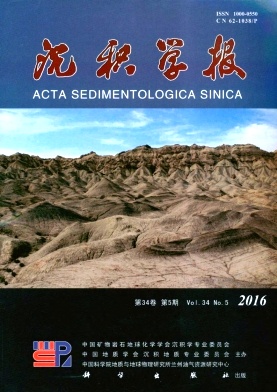Distinctive Significance of Calcite Fillings for Preservation of Deep Buried Karst Paleocaves: Taking the Ordovician System in Tahe Area for Example
doi: 10.14027/j.cnki.cjxb.2016.05.004
- Received Date: 2015-10-28
- Rev Recd Date: 2016-01-23
- Publish Date: 2016-10-10
-
Key words:
- calcite fillings /
- karst caves /
- preservation mechanism /
- Tahe area
Abstract: The buried depth of karst paleo-caves in Tahe oilfield, Tarim basin is deeper than others throughout the world. But little is known about the reason why it did not collapse. In order to explore the preservation mechanism of Ordovician deep buried karst paleo-caves in Tahe oilfield, by comparing burial history with the buried caves of Ordovician in Fort Worth basin, we noticed that there are a large number of calcite fillings in caves and fractures in Tahe oilfield. Based on statistical and comprehensive analysis of geochemical data, taking calcite genesis as the pointcut, the tectonic background, volcanogenic hydrothermal activities, oil and gas filling, occurrence of calcite and cave stress distribution are analyzed and a preservation mechanism of deep buried caves is put forward. Calcite precipitated in the near-surface filled part of the caves and rock fractures. Calcite is mainly precipitated in atmospheric fresh water environment, and a small amount of calcite formed under seawater environment. Calcite was also reconstructed by dissolution fluid (magmatic hydrothermal and organic acid) during burial process. They shared the overlying strata pressure in the process of strata subsidence, so that the caves have not been fully filled by collapsed breccia. Calcite added the pressure resistance of caves. Calcite filled in fractures of cave ceiling "healed" cracks near the cave, which strengthened the cave roof, increased stability of caves. Before the cave collapse, calcite occupied part of the cave space. When caves were deeply buried, dissolution fluids corroded part of calcite in caves preferentially through the cave system and fracture system. Therefore, filled caves have been recovered partly. So, the calcite filling in surface and near-surface is "retention diagenesis" of carbonate cavern reservoir.
| Citation: | LEI Chuan, CHEN HongHan, SU Ao, XU XueLong, ZHOU Hai. Distinctive Significance of Calcite Fillings for Preservation of Deep Buried Karst Paleocaves: Taking the Ordovician System in Tahe Area for Example[J]. Acta Sedimentologica Sinica, 2016, 34(5): 842-852. doi: 10.14027/j.cnki.cjxb.2016.05.004 |






 DownLoad:
DownLoad: